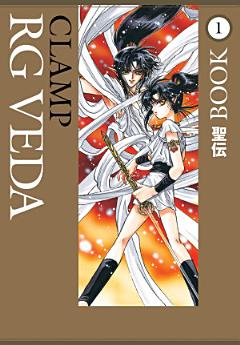RG Veda Omnibus
CLAMP
Sep 2016 · RG Veda Omnibus Vol 1 · Dark Horse Comics
4.9star
7 reviewsreport
Ebook
656
Pages
Bubble Zoom
family_home
Eligible
info
reportRatings and reviews aren’t verified Learn More
About this ebook
RG Veda, pronounced Rig Veda, is based on the classic Indian saga of the same name. The lush, sprawling epic follows Yasha, once a mighty warrior king, but now the lord of a slaughtered people he could not save. Yasha journeys the land as the companion and protector of the genderless Ashura, even knowing Ashura's fate is wound with doom for many. Together they seek the other four of the "Six Stars," whose prophesied gathering will at least defeat Taishukuten, the evil usurper of Heaven's throne. But all prophecies are open to interpretation...
Ratings and reviews
4.9
7 reviews
Ritu Nair
- Flag inappropriate
March 8, 2017
CLAMP have always been my favorite mangaka, since my childhood, when I was obsessed with all things Cardcaptor Sakura, and over the years I got acquainted with some of their newer works like Tsubasa Reservoir Chronicles and xxxHolic. But I never read Rg Veda and since a few of the characters from it crossover (which is like an alternate universe for the other series) into the TRC series, I was eager to find the original story of Yasha and Ashura. Now, this is supposed to be based on the stories in Rig Veda, but since I am not familiar with those, I cannot definitively comment on the how close this material comes to the original but it is a very loose adaptation and you are more likely to find the Japanese equivalents of the gods or their names in passing. It does not really match up to any Hindu mythology I know of, so I’ll be considering this more in the vein of the loosely adapted Greek mythology fantasy novels. In this story, the usurper Taishukuten has taken over heaven and has become the god-king by slaughtering the race of Warrior Guardians, Ashura. However, one lone Ashura has survived – the last lord and Yasha, the king of the Yasha tribe (who is fated to die at Ashura’s hands) takes the child Ashura under his care to gather the six stars (warriors) that would bring about the fall of Taishukuten. However, Ashura has also been prophesied to be be a force of evil or bring hell on them. Taking us through the various lands and tribes of Heaven, the past is slowly revealed about the war that happened 300 years ago, and the cause for it. Ashura, for his part, fluctuates between child-like and god-like and is a powerful being, but Yasha feels protective towards him and they form a familial bond. Other characters that join in include Naga, the Dragon King, and Souma, a ninja from the court of Queen Kedappa (Yasha’s half sister). There is a minor arc about Ashura’s feelings regarding everyone considering him a portent or their doom – really, telling a child that they never should have existed is pretty cruel, even if that child is a demigod that has been sleeping for 300 years. In terms of artwork, I would like to make two comments. On an anatomical scale, the characters are sketched in the old manga style – pointed faces, off-balance features, weird hairstyles, but backgrounds and costumes are done richly in details. When it first came out, it would have been a work of beautiful art, but since then CLAMP has made a lot of improvements in their style (e.g., their recent Gate7 or Tsubasa World Chronicle) so the old-fashioned look of the characters wouldn’t appeal as much. Overall, the book and this series seems interesting and I am looking forward to future books.
1 person found this review helpful
About the author
Clamp is an all-female Japanese manga artist group that formed in the mid-1980s. It consists of leader Nanase Ohkawa who provides much of the storyline and screenplay for the group's works and adaptations. Clamp also includes three artists whose roles shift for each series: Mokona, Tsubaki Nekoi, and Satsuki Igarashi. Almost 100 million volumes of Clamp manga have been sold worldwide. The author lives in Tokyo, Japan.
Rate this ebook
Tell us what you think.
Reading information
Smartphones and tablets
Install the Google Play Books app for Android and iPad/iPhone. It syncs automatically with your account and allows you to read online or offline wherever you are.
Laptops and computers
You can listen to audiobooks purchased on Google Play using your computer's web browser.
eReaders and other devices
To read on e-ink devices like Kobo eReaders, you'll need to download a file and transfer it to your device. Follow the detailed Help Center instructions to transfer the files to supported eReaders.








